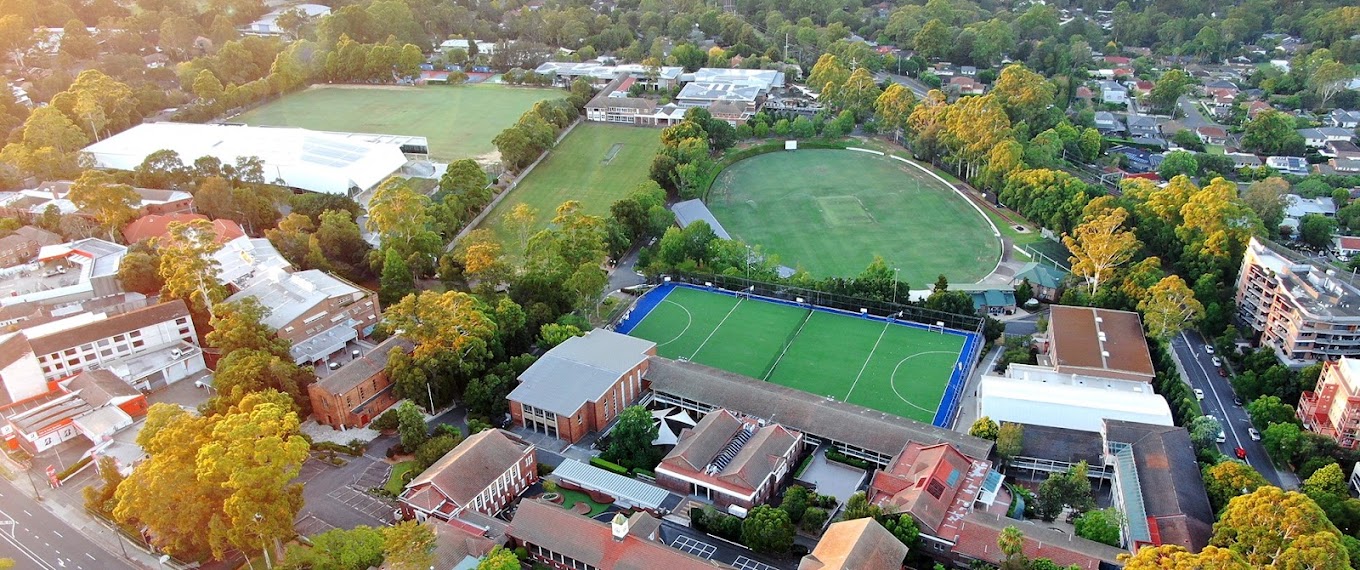Background
Despite being one of the largest schools in New South Wales, Barker College has its eyes very firmly on helping every individual find their place and thrive. The school, a Pre-Kindergarten to Year 12 private school in Sydney’s North Shore suburbs, has recently transitioned from single-sex to co-educational and now has approximately 2,500 students. The school also has three indigenous campuses: in the Central Coast and the Hunter Valley areas of New South Wales, as well as one in the Northern Territory.
The Challenge
As in any large school, managing AV systems can be challenging. “In a place this big, what’s important is to have things that are easy to install, easy to maintain, can be serviced remotely, and can be automated as much as possible,” says Mark Holbert, the school’s AV Engineer. “If I had to physically step into rooms to troubleshoot or check things, I wouldn’t get anything else done!” The digital signage system used at Barker College was complicated, so when the team went looking for a replacement, they wanted something that was intuitive and easy to use.
Fortunately for Barker College, the staff was already using Vivi in their classrooms, making it an obvious choice when it came to digital signage.
The Outcome
Since the move to Vivi for digital signage across to Vivi, Barker College has succeeded in bringing dynamic and engaging content to screens across the campus without the need for further investment. With the help of Vivi, Barker College has been able to:
- Bring versatility to its public screens. Thanks to Vivi, the six indoor and two outdoor screens in its sports center are just at home as scoreboards as they are sharing content for assemblies.
- Save money on digital signage. The school had already invested in Vivi and was gaining a return on investment through its use in the classroom. Vivi’s Digital Signage feature allowed the school to change from its existing, complicated digital-signage solution without having to invest in a replacement.
- Integrate on-screen messaging into its emergency management process. Now, thanks to Vivi, whenever an alert is triggered, the school can present evacuation signage onto any screen that is switched on. It’s an extra dimension to the process that will help keep the school’s students safe.
One Versatile Solution, Many Benefits
Holbert is ultimately responsible for the entire AV needs of the school, from the classrooms to the lecture theatres, assembly halls, sports centers, scoreboards, and meeting rooms. Fortunately, the school adopted Vivi a few years ago, well before Holbert arrived, and it is well and truly embedded into the way teachers run their classrooms. “There are a lot of component parts to our classroom systems,” says Holbert. “There are projectors, amplifiers, and multiple ways of connecting. But even so, most of the teachers refer to everything as their Vivi system; it’s almost the name they associate with it when they turn everything on.”
It helps that all the school’s staff are extremely familiar with Vivi. “Because Vivi is so intuitive, the number of requests we get for issues, training, or things like that are negligible“ says Holbert. “Everyone knows how to use it. Even new teaching staff don’t need to be given a half-day in-service on how to use it.”
Every classroom is interactive, and Vivi plays a central role. “The majority have interactive Epson projectors,” says Holbert, “and a handful of other spaces have touch screens with a smaller interactive panel. In terms of connecting to the screen in any room, thanks to Vivi it’s very straightforward. The experience is the same regardless of whether they’re in a small meeting room, a large lecture theatre, or an assembly hall. It’s the same process.”
In the school’s Science and Math classes, where OneNote is regularly in use, a lot of teachers connect their Surface Pros to Vivi and walk around the room, using their digital pens to make notes for the class to see. “The great thing about that,” says Holbert, “is that rather than students having to copy their notes as quickly as possible before they get rubbed out, everything appears on their own Surface Pro’s OneNote as well.”
The History and English teams also rely a lot on film and frequently make use of the video direct play feature in Vivi. “It’s great,” says Holbert. “It frees up their laptop so they can mark rolls and do all the other work they need to do while the students watch a video excerpt.”
Getting More Return from Digital Signage
In Holbert’s experience, the secret to successful digital signage is updating it regularly. Typically, after a big weekend of sport, the school’s screens are usually filled with images and highlights. “Having that nice, bright, well-designed signage pop up and stay there for a handful of days really draws people’s attention,” says Holbert. “But if they see the same thing every day, they just stop looking. We had a big music concert a couple of weeks ago on a Saturday, and by Monday morning, there were pictures from that concert on display. It’s really engaging.”
But it hasn’t always been so easy for the school to display these kinds of messages. When Holbert first started, the school ran a digital signage system called Dise, which used Intel NUC PCs. It allowed administrators to update the content over the network, but it wasn’t all that easy for the school’s communications team to use. “My understanding,” says Holbert, “is that it was a little clumsy and maybe slightly too technical for a non-technical person to look after.”
As a result, when looking to replace it, finding something that was intuitive and easy to use was an important requirement. Holbert embarked on a project to find a viable alternative but soon concluded that the answer lay in software the school was already using. Consequently, the senior school moved all its digital signage across to Vivi. “The fact that Vivi was already in here made it a great solution,” he says. “It was something everyone was familiar with — both from a user and ICT management standpoint. Our junior school is the only place where we use something else now. It is 100% an iOS environment, running iPads and Apple TVs. Even so, in several rooms, we have both Apple TV and Vivi running side by side.”
Being simple to use is one of Vivi’s big benefits. “Our main person who looked after digital signage left the school about two months ago,” says Holbert. “When her replacement started not long after she left, we swapped a few emails, and she was up and running very quickly. Despite the change in personnel, the signage is still updated regularly, and it always looks great. In fact, I’ve had almost nothing to do with it.”
Connecting Signage with Existing Emergency Management Procedures
The school has even begun to incorporate Vivi into its emergency management process. “That’s probably the most recent thing we’ve done with Vivi,” says Holbert. “At the moment, it’s set up so that when we trigger an alert in our current system (a combination of Integrity and some physical evacuation alarms), it pops evacuation signage onto any Vivi that’s up and running. We’re now looking at automating it so that even if the classroom system is switched off, we can display emergency signage on any screen when a lockdown or an evacuation is triggered.”
Cost Savings Plus Added Value
Aside from what Vivi brings to the classroom, it has also saved the school money. “There’s nothing more expensive than a system nobody uses,” says Holbert. “For us, it was never really about price — it still isn’t. It’s about picking a tool that will work, that people will buy into and use. I wouldn’t say Vivi is the cheapest alternative for digital signage solutions — there are other, cheaper ways of delivering it. Similarly, we could find cheaper alternatives to wireless content mirroring. But having one solution that delivers both, and other things beyond, means we don’t need multiple systems to cover those things. There’s certainly a cost benefit there.”
Vivi also brings versatility to the school’s screens. The large indoor sports center has five basketball courts, each using an LED screen as a scoreboard. There is also a large screen for assemblies and another two screens on the field outside. “Vivi means we can use those screens as scoreboards when we need to or, at the flick of a switch, we can turn them into digital signage or share content for assemblies,” says Holbert.


